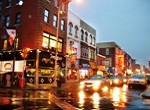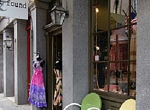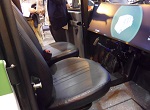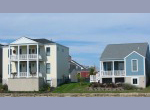Transit Oriented Development Attracts Business, Residents
Last Reviewed: July 10, 2025
Transit oriented development, often abbreviated TOD, refers to a development both adjacent to and oriented toward a transit stop. Usually rather than simply a bus stop, a station for a light rail or subway system or a bus hub center are necessary to make the density and permanence sufficient for the concept to be viable.
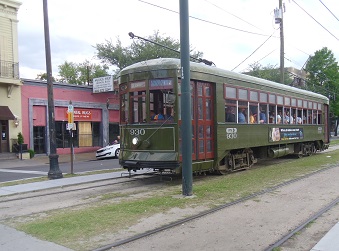
The idea often is associated with mixed-use development, including both residential and commercial land uses, or at least a mixture of retail and office.
Sometimes civic uses and services such as day care also become
part of the TOD. All locations within the complex should be within a
half-mile of the boarding location, with lower density or intensity uses
at the periphery. Sometimes developers and cities will express the maximum distance from the actual transit stop as a 10-minute
walk instead.
The Benefits of a Transit Oriented Development
This idea is so powerful that it's hard to see why many regions and individual municipalities have been slow to capitalize on it. We can only speculate that decision makers are too indifferent to transit itself to care much, but we hope our readers will challenge that thinking, or rather, that lack of thinking.
The concept is attractive because if enough density can be clustered around a transit stop, there could hardly be more positive green effects, including:
1. Households are able to realistically reduce the number of cars they own. This is not a trivial factor in overall housing affordability; car ownership is estimated to cost an average of $9,000 annually. and the number of miles driven.
2. Transit enjoys increased ridership.
3. The real estate development becomes attractive to non-drivers or non-owners of automobiles.
4. The station is enlivened for other passengers and the surrounding neighborhood, and safety at the stop increases.
5. Passengers are able to take advantage of small businesses, such as coffee shops or other convenience goods purveyors, who may lease space in the transit oriented development.
6. A blow against suburban sprawl is struck. In fact, a related term, transit proximate development, carries this specific meaning.
7. Parking space requirements can be reduced because households can feasibly own fewer automobiles. Thus paved area and cost of constructing and maintaining surface or garage parking is lowered, making the housing overall less expensive.
Joint parking for the development, including commercial and residential uses, as well as transit riders, represents a possible savings in total parking needs. Parking, especially one-level surface parking, is expensive, encourages unnecessary driving, and complicates stormwater management.
By the way, transit proximate development is the term used to describe instances in which the development is near transit, but not fully oriented toward the transit facility in the sense of shared parking, physical orientation promoting easy access to the boarding platform, particular care being taken for pedestrians, and so forth. A similar term you might hear is transit adjacent development. So in professional jargon, transit proximate development is less desirable than true TOD.
8. The community reduces its carbon footprint. In the face of climate change, any relief from the need to drive to work or to obtain basic goods and services is a positive at both the household and community levels.
We need to raise a note of caution too, however. It's clear that both ride sharing (such as Uber or Lyft) and driverless vehicles may threaten current transit systems that fail to adapt. Indeed in our article on autonomous vehicles and transit, we argue that transit systems need to take the lead role in what we think and hope will be an electric, ride-hailing, driverless future for transportation, especially for the "first mile" and "last mile" of trips in urban and suburban settings.
There are many good arguments for a public and public-spirited transportation future. If the transit operators of today become nimble enough to adapt to an environment where few vehicles are in private ownership, transit agencies can deliver passengers seamlessly to existing fixed route transit lines and thereby continue to recover the massive costs of building the systems.
How to Build a Successful, "Green" TOD
Features that are important to the success of a project include the following:
- Building at a sufficient density. Single-family homes will not bring the market for convenience goods, transit ridership, and reduction in vehicular traffic that will be required. If we could repeat that sentence without being ridiculous, we would. Nothing is more important. For more on increasing acceptance of density, see our page on the YIMBY (Yes In My Back Yard) movement.
- All aspects of the development tailored for pedestrian safety, particularly if the transit stop pre-dates the surrounding new construction. The goal is not to march pedestrians through huge parking lots, but rather to tuck parking into out-of-the-way locations, preferably in garages, so that residents and commercial customers have a quick and safe path to transit.
- Reduction in the amount of parking that normally would be required for a comparable development without access to transit. Since residents, employees, and visitors all may arrive by transit, lowering the number of parking spaces should be feasible. Parking also may be managed strictly so that shoppers, for instance, can park near their destinations.
- Enough open space and nature for the transit oriented development to be attractive and people-friendly.
- Multi-story buildings. Design inventiveness can prevent simply a series of nearly identical and therefore boring five-story buildings. Good design and attention to detail also may attract cultural institutions, whether on a permanent or a pop-up basis. Creating a vibrant atmosphere with some public gathering space is critical to a successful 24-hour, 7-day space.
- If the real estate development is massive enough, a collector system of vans or small buses. Circulation internally within the development further assists residents, customers, and visitors, especially in harsh climates.
- Appropriate housing types for the singles, empty nesters, or couples without children who are especially likely to be attracted to the TOD.
- Mixed-income housing, important in every neighborhood. This policy can be quite unobtrusive in a densely stacked transit oriented development.
- Green infrastructure, specifically including smart infiltration of stormwater runoff and inclusion of enough open space. Stormwater detention and retention may serve the dual purpose of providing open space and contributing to clean water.
Broader Impacts of TOD
Surprisingly, perhaps, transit oriented development can lead to neighborhood revitalization and redevelopment. TOD also can counteract tendencies toward urban sprawl, although as we note on the transit and sprawl page, the relationship is not always linear.
In cities where transit, or at least the form of transit under consideration, is popular, the existence of the station and the provision of sufficient density will be enough to overcome very strong objections about neighborhood quality.
Of course, if you are building a transit oriented development in a neighborhood of questionable safety, extra precautions become necessary, and the usual tapering off of density at the edge of the development may not be as applicable. In that situation, you might want to harden the edges instead, only hinting architecturally at entrances on the periphery of the development and instead placing all the real doorways into units on the interior of the project.
The state of New Jersey has been offering state grants for the creation of what they term a transit village. The Garden State has emphasized affordable housing and job growth in addition to other common elements of transit oriented development. We think that designing affordability into the project will be fairly easy in a TOD compared to some other sites. Also consider how the development could add considerably to racial equity in community development.
For an interesting article on how transit oriented development can improve the amount of affordable housing, see the link. And we should add that in many parts of the world, transit oriented development has been a norm for many years.
This raises the point that public sector involvement to spur transit oriented development often is necessary. Surprisingly, sometimes developers are slow to catch on, and to request the type of mixed-use zoning that would be required to make the transit oriented development an optimum success.
So pre-zoning for TOD can be a tremendous stimulus to the process, because it sends a signal to the development community about the density that would be allowed and also the types of uses that can developed in close proximity to one another with good planning.
Listing the criteria for pedestrian amenities in advance also will prevent surprises, and if you want to take our advice and require a hint of green amidst an otherwise packed site, it's important to pre-warn the development community of that factor as well.
Delineating the degree of parking relief that might be allowed also helps developers begin to visualize the profitability that could come their way as a result of pursuing perhaps the extra complexity of TOD. Better yet, build in specific lower parking requirements for TOD.
Recently Chicago has passed a fairly far-ranging bill providing several forms of TOD incentives. It imposes a maximum parking rule of one space for every two units. (Other provisions of interest to us included the broadening of the TOD concept to more bus lines, allowing the TOD provisions to kick in for developments as far away from the transit stop as four blocks, and a modest attempt at slowing gentrification tendencies of TOD development in the most thriving neighborhoods. You can read more about the Chicago TOD revisions here.)
Any financial incentives to be offered, including tax increment financing or other more innovative incentives, could and should be signaled in advance by the government as well.
For extensive additional information, also consult this site on the subject. But for inspiration, you might want to check out a story one of our site visitors sent, which they titled A Transit-Oriented Development Fable.
Learn More About TOD-Related Topics
- Making and Keeping a Good Community >
- Community Challenges, Topics & Concepts >
- Sustainability > Transit-Oriented Development
Join GOOD COMMUNITY PLUS, which provides you monthly with short features or tips about timely topics for neighborhoods, towns and cities, community organizations, and rural or small town environments. Unsubscribe any time. Give it a try.
